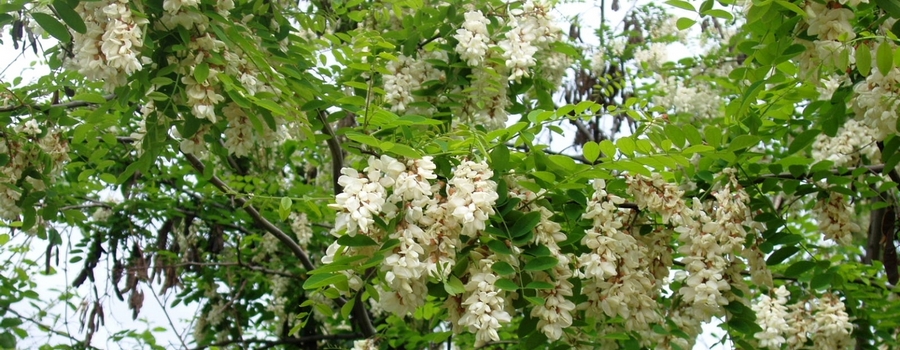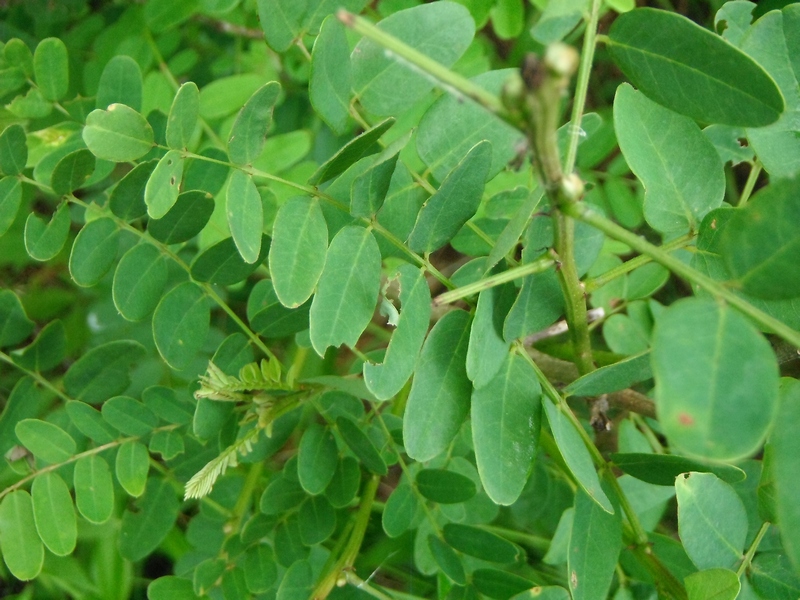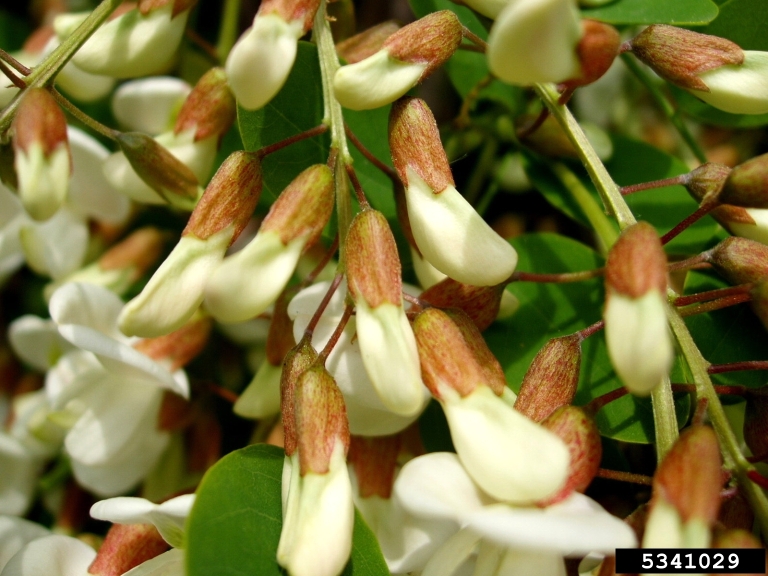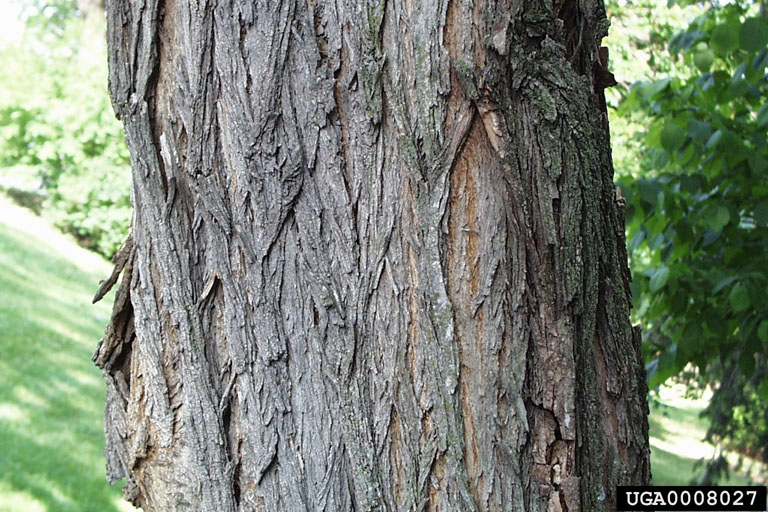photo: Jan Samanek, State Phytosanitary Administration, Bugwood.org
Black Locust (Robinia pseudoacacia)
Form:
Fast-growing tree in the Legume Family, grows 30-90' tall with a trunk 2-4' in diameter. Forms multiple-stemmed clones and is slow to leaf out in spring. Seedlings and small branches have paired thorns. Bark is smooth and green on saplings, but dark with deep furrows on mature trees. LEAVES, SEEDS, AND BARK ARE TOXIC TO LIVESTOCK AND HUMANS IF INGESTED.
Leaves:
Alternate, pinnately compound with 7-21 leaflets, arranged in pairs with one unpaired leaflet at the tip. Leaflets are thin, entire, elliptic, bluish-green above and pale beneath.
Flowers:
White, pea-like, very fragrant, in showy, drooping inflorescences. Bloom in mid-spring.
Fruits & Seeds:
Flat, shiny brown pods, 2-6" long, contain 4-8 seeds. Pods often persist on tree through winter.
Roots:
Extensive system of fibrous roots and shallow rhizomes. Reproduces vegetatively by root suckering and stump sprouting.
Tier 3 - Presence is of Interest
The species that occur in this tier are likely ornamental escapes. It is not known whether they are established and/or spreading within Cleveland Metroparks. The ecological impact is poorly known for these species.
Action: The presence of these plants should be recorded by approximating the number of plants. Initial population numbers are likely small.










